Zionist Political Violence: Patterns and Motives
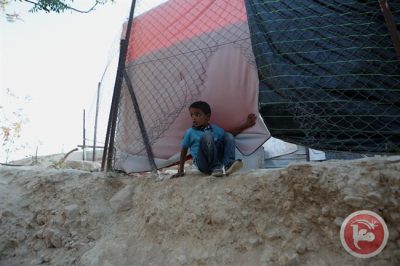
Before embarking upon this complex task, there is a need to shed some light on the phenomenon of general violence and its diverse patterns. This will be done by giving some internationally accepted definitions of violence in general and political violence in particular.
Definition of Violence
In addition to the complex socio-political nature of the phenomenon of violence, and the large ideological charge it carries in its fold, we find many different definitions. Therefore, there is no single comprehensive definition that researchers and writers can adopt, because the class biases of those who developed these definitions dominate their social consciousness, therefore their thinking affect the concepts and definitions they produce.
However, I will present some definitions, adopted by international bodies, and others employed by some writers, which can give us somewhat clear definitions and a relative scientific credibility.
An internationally acceptable definition of violence is that of the World Health Organization. In one of its World Reports, the WHO defined violence as:
“… The intentional use of physical force or power, threatened or actual, against oneself, another person, or against a group or community, that either results in or has a high likelihood of resulting in injury, death, psychological harm, maldevelopment or deprivation.”[1]Moreover, political violence is some kind of collective violence that could be perpetrated by groups, as well as, by states and thus be called state violence. Consequently, it includes “…economic violence … such as attacks carried out with the purpose of disrupting economic activity, denying access to essential services, or creating economic division and fragmentation…”[2]
American philosopher Hanna Arendt, distinguished between violence and power by arguing that “… Violence can be justifiable, but it never will be legitimate. Its justification loses in plausibility the farther its intended end recedes into the future…”[3]
Arendt found that violence and racism are interconnected and interrelated. She asserted that “…Violence in interracial struggle is always murderous, but it is not “irrational”; it is the logical and rational consequence of racism, by which I do not mean some rather vague prejudices on either side, but an explicit ideological system…”[4]
Hannah Arendt pointed out the differences between the two phenomena by asserting that,
… Power is indeed of the essence of all government, but violence is not. Violence is by nature instrumental; like all means, it always stands in need of guidance and justification through the end it pursues. And what needs justification by something else cannot be the essence of anything… Power needs no justification, being inherent in the very existence of political communities; what it does need is legitimacy.[5]Political violence, in its various forms and to varying degrees, is used in settler colonial states as a tool to: plunder the rights and wealth of indigenous peoples, to neutralize their resistance to the settlement colonial project, to strengthen the process of ethnic segregation within the settlement colony, to sabotage the conditions of class conflict, and to divide the ranks of the vulnerable elements within the settler colonial working class.
Although the phenomenon of political violence can be seen as a hallmark of the Zionist movement and its practical applications in Arab Palestine, some Zionists, writers and politicians, have developed ideological concepts that give Zionism some exceptions, such as the slogans of “purity of arms”, “self-defense”, “self-restraint” and “hatred of violence”. By formulating these slogans, they sought to paint a different picture of the practices of the Zionist movement. The following is an analysis of the concept of “purity of arms” which have developed by Zionist settlers in the 1930s.
The Myth of the Purity of Arms
The concept of “purity of arms” is one of the symbols of Zionist military culture, which was developed during the British colonial period 1919-1948. The Israeli military wanted this concept to mean that the weapons used by the Zionist soldier will not be used against the innocent and therefore will remain pure.
According to Zionist writer Anita Shapira, it was during the 1936 Palestinian revolution in Palestine, that Zionist settler colonialists promoted,
“… [s]elf-image of Jews as a people who hate violence, as opposed to the image of Arabs as a bloodthirsty people… In exchange for the bloodthirsty image of the son of the desert, the moral image of a Jew who does not harm the innocent has been developed …”[6]The ideological, political and psychological aspects of the use of political violence were developed by the Zionist movement and were used as a successful tool in recruiting settlers and making them a monolithic bloc. This act transcended the class conflict within the settler community and justified the looting, violence and terrorism that were employed against the Palestinian indigenous population.
Patterns of Zionist Political Violence
Zionist author Ian Lustick attributes to Zionist violence defensive motives and other social and ideological motives. He elaborated his ideas by stating that,
… the fight of Jews and their revenge against the Palestinian villages and Bedouin tribes, were motivated not only by self defense, but also by the desire to prove individual self-worth through the use of successful violence. This strives for the collective crystallization of an inspiring example of physical prowess and Jewish heroism in Palestine. It also provides Diaspora Jews with legitimacy which is another dimension of Zionist ideology.[7]Zionist writer Anita Shapira elaborated that the ideology of so-called “restraint” and “self-defense” of the Zionist military has been adapted to offensive tactics and aggressive practices, and it was expressed in this most obvious position: “We will not harm innocent people, and our weapons will remain clean.” But we will strike gangs** and their bases in the villages …”[8] She continued by stating that “… more than once, and by necessity, innocent people have also been harmed…” Here we will present patterns of Zionist military operations that Shapira wants to include under the classification of “compulsive form” to give it exceptional status and show it as if it occurred without prior planning but inadvertently and accidentally.[9]
The Myth of Self-Defense
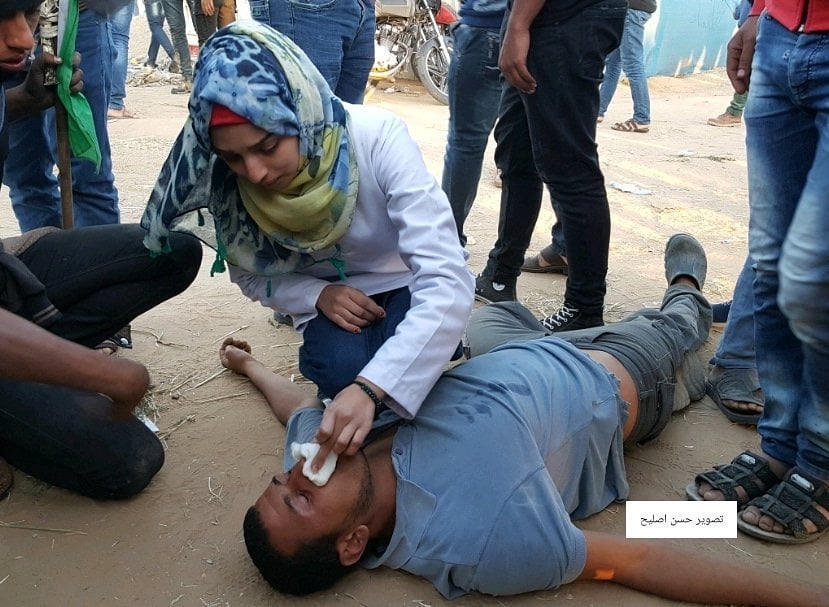
Razan
al-Najjar, the 21 year old Gaza medic killed by an Israeli sniper on
June 1, treating an injured man, undated photo from Palestine Live on
twitter.
This self-image developed by the Zionist settlers of their soldiers
appears to be inconsistent with the military practices that have taken
place on the ground. In 1936-1939, Zionist military organizations
Hagana, Etsel and Lehi carried out series of military operations against
Palestinian civilian communities, causing many Palestinian civilian
casualties. The operations varied and included: indiscriminate shooting
of civilians passing by, shooting at: house residents, bus and train
passengers. In addition, grenades were thrown at civilian gatherings,
inside cafes, restaurants and cinemas. There was frequent use of
temporary explosives, mines, car bombs and barrel bombs that were placed
inside Palestinian city neighborhoods.[10]It is worth mentioning here that the Zionist military organizations were the first to blow up cars in Palestine, and the first to use barrel bombs filled with booby-trapped explosives, which was a distinctive Zionist innovation. These barrels were known as “Jewish barrel bomb technique”[11]. They were used in the occupation of the city of Haifa, and during the ethnic cleansing of the city in 1948. The “barrels” were stuffed with explosives. They were rolled from the top of the Carmel Mountains to the lower Arab neighborhoods. They were electronically built so as to explode the moment they collided with the houses of Palestinian civilians.[12] Moreover, barrel bombs were also used by Zionist terrorists against Palestinian civilians in the cities of Jaffa and Jerusalem.[13]
These operations can only be described as terroristic, because the victims were always innocent Palestinian civilians and they bore Zionist political objectives. In order to better understand such Zionist practices, we need to shed some light on the phenomenon of terrorism, which was used as a functional tool for achieving political objectives.
According to George Lopez, an expert on the issue of terrorism,
Terrorism is a form of political violence… Terrorism is not violence without thinking. It reflects a detailed strategy that uses extreme violence to make people feel vulnerable and can be hurt many times … In the long run, the terrorists seek to employ this fear to serve real political objectives.[14]In response to claims by the Zionist writers that Zionists were forced to use violence and force because of violent operations carried out by the Palestinians against Zionist settlers, American writer Norman Finkelstein showed that Zionism “did not use … [v]iolence in spite of it. The use of force was not circumstantial. The use of force was integral in the goal of transforming Palestine, which has an overwhelming Arab majority, into a Jewish state.”[15]
In his analysis of the myth of “the purity of arms”, Israeli academic and researcher Dan Yahav pointed out that,
Terrorism has coincided with Jewish settlement since the beginning of agricultural and urban settlement in Israel at the end of the 19th century, when security problems for individuals and property emerged. Many violent acts and accompanying reprisals have been carried out against the backdrop of numerous territorial disputes…[16]Moreover, Zionist violence and terror did not start with the ethnic cleansing campaign in 1948-1949, but preceded that in a number of years. For example, at the beginning of the 1936 general strike in Palestine, three members of the Hagna military organization threw two grenades inside an Arab café located in the Rumema neighborhood of Arab Jerusalem. Three Palestinians were killed and six others were wounded in the blast. In November 1940, three ships carrying 3,642 illegal Jewish settlers sailed to the port of Haifa. Their mission was organized with the approval of the Gestapo. Being illegal, they were arrested by the British mandate authorities, who prevented their entry into Palestine and decided to deport them to Mauritius. The British authorities transferred a number of illegal immigrants to a French ship called Patria. The leadership of both the Jewish Agency and the Hagana, decided to sabotage Patria to prevent it from sailing to Mauritius. On November 25, 1940 a mine was smuggled in and planted into Patriato be later detonated. The blast created a large hole and water began to enter the ship. As a result, the ship tilted on its side, throwing to the sea water a large number of Jewish illegal immigrants and drowning 267 of them.[17]
Yahav’s book is full of many examples of terroristic practices that were perpetrated by the Zionist military organizations. Therefore, “The purity of arms”, “self-defense”, “hatred of violence” and “restraint” were ideological symbols and legends that were developed by Zionist settlers from the military, political leaders and writers. The aim behind their development was to conceal the truth, to conceal the atrocities and war crimes that were committed against the indigenous Palestinian population, and to show some sort of a fake morality of Zionist colonialist settlement.
If compared with other settler colonial projects that have evolved in the Third World, certain features give the Zionist settlement project a special form and specificity. The Zionist colonial project aimed at replacing the indigenous people of Palestine with settler colonial immigrants. This replacement was carried out by ethnic cleansing through the use of pure violence, aggression, terrorism and massacres, of which 110 massacres[18] were committed in 1948-1949. Therefore, we can call the Zionist project a colonial settlement that sought to colonize by replacement.
Israeli Violent Society
There are many testimonies of scholars and writers in the world who confirm the violent and aggressive nature of Israeli settler colonial society. But few Israeli intellectuals recognize this, or are willing to admit it. However, there are exceptions. In an interview with the evening economic Israeli newspaper Globes, former Israeli Minister of Education, Shulamit Aloni, described Israeli society in the following terms.
We are an uncivilized society. Violence and cruelty here are appalling. Is pride in violence not present in the military? How many people have come out of the army, since the first intifada, and were completely insane? All of this is caused by the occupation, which is rooted here in a beautiful place. Occupation is corrupt because it allows the theft of their land and allows them to be abused and looted. The 14-year-old boy comes out with a knife that he knows is allowed, he knows very well what is happening, and he also wants to defend himself. They are watching the strongest, most ethical and their practices. If in the past they were cursing, they are now beating. If in the past they were beating, they are now stabbing. We are people who scream all the time, and that is part of the violence. They didn’t teach us to speak quietly, to listen. We became violent by shouting, talking and acting as well.[19]
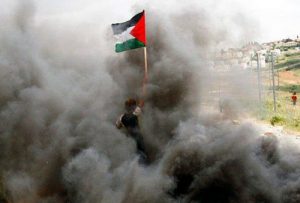
It is worth mentioning that Israeli prolonged occupation of the Palestinian territories of the West Bank and the Gaza Strip has been accompanied since 1967 with settler colonies that were established illegally inside the Palestinian territories. Thus Zionist rule inside these territories encompasses all the features of settler colonialism, and military occupation is one feature that was used as a tool to implement the Zionist settler colonial project.
As a precondition to the practice of Zionist political violence, Zionist leaders employed zoological language in the description of Palestinian indigenous peoples. The use of zoological language was the environment into which two psycho-sociological processes, that of substitution and dehumanization, evolved prior to the practice of political violence.
(e) Racism and Zoology
Over the years, terms, expressions and titles have been developed and used only by Jewish Israelis when they speak or write about Arab Palestinians. These terms are used in the media (written, visual and audio), in public spaces, by military personnel, politicians, intellectuals and even by children. I will present some of these titles here and then analyze the motive behind their use in Israeli and Zionist discourse.
There are special terms that are used in Israel to describe Palestinian demonstrations such as “assafsoof”- mobs, “shelhoov yetsareem” – alerting instincts, “hamon moussat”- an incited gathering, and “heshtoliloot”- meaning insane behavior. In addition, when the Israeli army attacks a Palestinian position, they use the term “tihoor kenay mihableem”- clearing nests of saboteurs, as if Palestinian fighters were nothing but harmful insects that should be sprayed with chemical pesticides. All these titles are circulated in various Israeli media.[20]
The use of these racial slurs is not limited to the Zionist period of settler colonialism. Other racial slurs were also used during the period of Jewish non-Zionist settler colonialism. In his essay “The Truth from the Land of Israel”, spiritual Zionist writer Ahad Ha’am mentioned in 1891 that “We are accustomed abroad to look at Arabs as wild barbarian animals who live in the desert and as a people who are similar to donkeys…”[21]
Zionist leaders frequently used racial slurs. The Zionist right-wing theorist, Vladimir Jabotinsky, described the Palestinians as “a group of half-savages.”[22] Tivankin, one of the leaders of the left-wing Zionist party Ahdoot Havoda, described Palestinian demonstrations as “masses of savages”, “Arab thieves”, and “an instigated mob”[23], while the Zionist leader David Ben-Gurion told a meeting of his party Mapai in 1931, “They also have the right to human beings, but they are savages,”[24] and a number of Zionist intellectuals, such as the writer Abba Ahimeir and the national poet Ori Tsvi Greenberg, did not see the Arabs as human beings, but regarded them rather as “desert savages” and “herds of Arab wolves.”[25]
During the Israeli invasion of Lebanon in 1982, former Israeli prime minister Menachem Begin called the Palestinian Arabs “animals on two legs”[26], while former northern commander General Yanush Ben-Gal described Palestinians, in the Galilee region in northern Palestine, as “cancer in the body of the state.”[27] The former commander of the Israeli army, general Rafael Eitan, described the Palestinians as “drug-sedated cockroaches in a bottle”[28], and one of the settler leaders in the West Bank, lawyer Elyakim Ha’etsni, described the Palestinians as “rats”[29]. General Ehud Barak described the Palestinians as “crocodiles”[30], while Rabbi Ovadia Yusuf, rabbi of the Eastern Jews and spiritual leader of the Shas party, described the Palestinians as “snakes”[31] which symbolized evil.
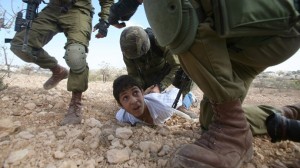
The frequent use of racial slurs for the Palestinian Arabs that come from the world of animals and insects does not stop with these leaders, but is employed by some Israeli intellectuals, like writers in literature and children’s stories and researchers. For example, Israeli writer Or Paz, who wrote a novel entitled “Ants”, described Palestinians as “people” composed of ants, that are damaging the upper storey of a couple of Israelis who are meant to symbolize the Israeli people.[32] Israeli university lecturer Benny Morris described Palestinians in the West Bank and the Gaza Strip as “wild animals” and “barbarians”. He recommended that something like a cage has to be built for them. He also depicted the Arab world as a “barbarian world”. [33]
In 1985, Israeli researcher Adir Cohen studied and analyzed 1,700 Israeli children’s books written by a group of Israeli children’s book writers. In many of these children stories, Adir Cohen found that the authors have depicted the Palestinian Arabs with racial slurs that included “poisonous snakes, foxes, wolfs, donkeys, frogs, and predators.”[34]
At least two right-wing ex-ministers, have openly used racial slurs against Palestinian Arabs. In 2013, the then deputy defense minister MK Eli Ben Dahan, depicted the Palestinian Arabs by saying: “To me, they are like animals, they aren’t human”[35]. And in 2014, the then Minister of Justice Ayelet Shaked, called Palestinian Arabs “little snakes”.[36]
The phenomenon of using racial slurs to depict the indigenous populations is not limited to the Israeli settler colonizers, but has also appeared among other European settler colonizers. Frantz Fanon has pointed out that French settler colonizers in Algeria have also used similar racial slurs in depicting the indigenous Algerian Arabs.
…In fact, the terms the settler uses when he mentions the native are zoological terms. He speaks of the yellow man’s reptilian motions, of the stink of the native quarter, of breeding swarms, of foulness, of spawn, of gesticulations. When the settler seeks to describe the native fully in exact terms he constantly refers to the bestiary…[37]
The use of zoological racial slurs is psychological self-deception used by the settlers to ease their “collective conscience”. They implement this self-deception through replacement and dehumanization.
The Process of Replacement
In order to carry out all settler heinous crimes, the settler colonialist uses violence and terror because he faces continuous national resistance from the indigenous population. He cannot convince the indigenous population to voluntarily give up their lands, resources, freedom and homeland.
Instead of normally having guilt feelings and uneasy conscience, the settler colonialist possesses the very opposite, a deep seated hatred. In order to understand this abnormal behavior, we need some sort of socio-psychological analysis.
British psychologist R.D. Laing confirms that “[w]e attribute to them exactly what we do against them, because we see ourselves within them, but we don’t know that. We think they’re others, but they’re actually us.”[38]
Therefore, negative and despicable traits such as cruelty, racial hatred, looting and theft, which, as Laing asserts, are attributed to the colonized victim.
In his analysis of this psychological phenomenon, Israeli psychiatrist Yiftah Sokhinbar[39] affirmed that every human being has a “natural sense of justice towards his or her likes.” But aggression also produces a sense of guilt. Guilt also leads to self-hatred among some persecutors.[40]
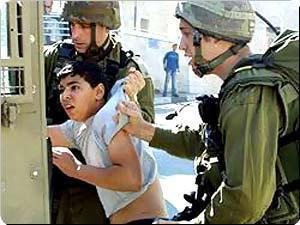
Sokhinbar confirms that the persecutor “develops, before meeting with the persecuted, an aggressive view. He sees himself as an aggressor, and he regards the world as an aggressor. His aggressiveness increases the fear within him, and puts him in a closed circle. An appropriate ideology evolves around it.”[41] Moreover, “… For the majority of persecutors, self-hatred and guilt are eliminated by dropping them on the victim, which exacerbates the persecutor’s aggressiveness.”[42]
The presence of these colonial imperative features was confirmed by Tunisian psychiatrist Albert Memmi, who indicated that any colonial settler with a true human conscience is totally unfit to be a good settler.[43]
But, in order for the settler to hate them, his hatred needs to be adequately justified. The settler justifies his racist hatred and gives it some kind of fake legitimacy in his eyes, by assuming racial superiority towards the indigenous peoples. In his view, they become degenerates, dirty, and have animal features. Therefore, they are not worthy of the ownership of the land, wealth, homeland and freedom, and they do not deserve human treatment, but only contempt and hatred.
The settlers use animal racial slurs to dehumanize the indigenous people in order to become, in their view, subhuman, mere animals that one should not harbor any guilt feelings towards them. The process of dehumanizing the indigenous population serves the settler psychologically. When the indigenous people are transformed into animals, especially harmful and predatory animals, the settler can despise and hate them and consequently can easily direct his aggression towards them.
The Process of Dehumanization
The process of developing stereotyped ideas must be preceded by a psychological process that can be called a process of dehumanization.
This process frequently takes place in confrontational relations, especially in relations of exploitation and hegemony. In order to be able to direct our aggression towards another being, we must depreciate his value beforehand, thus making aggression against him look legitimate and justified…[44]
In his introduction to Albert Memmi’s book “The Colonizer and the Colonized”, Jean Paul Sartre pointed out the following observation.
… No one can treat a human being like a dog without first considering him a human being. The inability to abhor the humanity of the persecuted becomes the alienation of the persecutor… Since he denies humanity in others, he regards it — everywhere — as his enemy. In order to manage this, the colonizer must take extreme cruelty and adopt the immunity of the stone. In short, he must, also, depreciate his own humanity.[45]Concluding Remarks
- Zoological racial slurs are used to dehumanize the Palestinian indigenous population by giving fake legitimacy to the looting of their homeland, and to the deprivation of freedom and wealth thus allowing the launching of colonial aggression against them under various pretexts.
- Zionist colonial consciousness produces a colonial ideology that prepares the settler and provides him with a psycho-intellectual readiness to attack the Palestinian indigenous population.
- Deep-seated hatred and racist ideology are aimed at legitimizing looting, subjugation, colonial settlement and apartheid. Political violence and colonial oppression are employed as two tools in the achievement of the stages of the Zionist settler colonial project.
- Zionist violence, aggression and terrorism against the Palestinian indigenous population constitute structural phenomena related to the Zionist colonial structure.
- Finally, the Zionist state is not violent because it is a “Jewish state”, it is neither violent because its violence is “in self-defence”, nor is it violent because of the Arab-Israeli conflict. The Zionist state is not violent for “security reasons” or “in reaction to Palestinian Arab violence.” The Zionist state is violent because of its political, ideological, socio-economic structures. All colonial states have historically been violent, aggressive, terroristic and their violence has been structural, persistent, not partial, or accidental, or exceptional.
Note to readers: please click the share
buttons above or below. Forward this article to your email lists.
Crosspost on your blog site, internet forums. etc.
Dr. Zuhair Sabbagh teaches
sociology at Birzeit University in the colonized West Bank. He is a
resident of Nazareth, Israel. He holds a Ph.D. in Sociology from the
University of Manchester and is author of a number of books and research
articles.
Notes
[1] Krug, Etienne G. and others (ed.) (2002) World report on violence and health, https://apps.who.int
[2] Ibid.
[3] Arendt, Hannah (1970) On Violence, z-lib.org. Retrieved on 15-6-2020
[4] Ibid.
[5] Ibid.
[6] Shapira, Anita (1992) Land and Power- in Hebrew (Tel Aviv: Am Oved Publishers Ltd) p. 324
[7] Lustick, Ian , “Changing Rationales for Political Violence in the Arab-Israeli Conflict”, Journal of Palestine Studies, Vol. 20, No. 1, Autumn 1990, p. 54-79
[8] Shapira, Anita, op. cit., p. p. 324
[9] Ibid.
**The Zionists use this demeaning term to describe Palestinian military resistance groups and organizations (ZS).
[10] Shahhak,
Israel – Edited ( No year of publication) The Book of Zionist
Terrorism- A Collection of Documents – In Hebrew – (Jerusalem: Published
by Israel Shahhak).
[11] Wikipedia, “Barrel bombs in Palestine and Israel”, https://en.wikipedia.org, Accessed on: 22-6-2020
[12] Shahhak, Israel, op. cit.
[13] Wikipedia, “Barrel bombs in Palestine and Israel”, op. cit.
[14] Valkh,
Yehuda (2000) Atlas Carta, p. 24. As quoted in Yahav, Dan (2002) The
Purity of Arms – Myth and Reality- in Hebrew (Tel Aviv: Tamooz
Publication House), p. 16
[15] Finkelstein, Norman, “Shattering a Zionist Myth: “Defensive Ethos or Mission of Conquest”, Arab Studies Quarterly, Vol. 15, No. 3, Summer 1993, p. 119
[16] Yahav, Dan (2002)The Purity of Arms – Myth and Reality- in Hebrew (Tel Aviv: Tamooz Publication House), p. 18
[17] Steiner,
Gershon (1964) Patria(Tel-Aviv: Am Oved Publication House) p. 205. And
Karta Atlas 2000, pp. 42-45, 152, 153, 154, 155. As quoted by Yahav,
Dan, op. cit.,pp. 34-35
[18] Erlich, Guy, “Not Only Deir Yassin”, Ha’irWeekly, 6-5-1992. As posted by www.jewwatch.com, 3-6-1996
[19] Aloni, Shulamit, Globusin
Hebrew, 12-3-2009. As quoted by Al-Mash-had, “Shulamit Aloni: Barak is
the most dangerous person in Israel”, www.madarcenter.org, 20-1-2010.
[20] I have
been a keen observer of Zionist media for the last 50 years. These
slogans and concepts have been frequently used in the printed media, as
well as, on radio and television news bulletins. The Zionist media
repeatedly employ them to this very day (ZS)
[21] Ha’am,
Ahad (1891) “The Truth from the Land of Israel”, as quoted by: Ben Ezer,
Ehud, The Arab Question in our Literature, the first interview with
Ehud Ben Ezer, Shidamote Magazine, issue number 46, Spring 1976, p. 16
[22] Haolam Hazeh monthly – in Hebrew, 15-8-1983
[23] Tevet,
Shabatai, (1985) Ben Gurion and the Arabs of the Land of Israel– in
Hebrew (Tel-Aviv: The Shukin Publication House) p. 77. As quoted by
Gulomb, Naftali (2001) Prepared Table– in Hebrew (Tel-Aviv: Lemudan
Publication House Ltd) p. 102
[24] Ibid.
[25] Anita, Shapira, op. cit., p. 273
[26] Yedi’out Ahronoot Daily– in Hebrew, 13-4-1983
[27] Ibid.
[28] Ibid.
[29] Haaretz Daily– in Hebrew, 1-6-1984
[30] Barak, Ehud, Reported in the Jerusalem Post, www.jpost.com, August 30, 2000
[31] Strasler, Nehemia, “So is it okay to kill me, too?”, Haaretz Online, www.haaretz.com. Accessed on 11-3-2005
[32] Paz,
Ori, The Ants (a play). As it was analyzed in “The Arab Question in our
Literature” – in Hebrew. A second interview with the writer Ehud
Ben-Azar, the Shadmote magazine, issue 47, Summer 1976, p. 42
[33] Shavit, Ari, “Survival of the fittist”, Haaretz Online, www.haaretz.com. Accessed on 14-1-2008
[34] Cohen, Adir (1985) An Ugly Face in the Mirror– in Hebrew (Tel-Aviv: Reshafim Publication House) p. 90
[35] Turley, Jonathan, “They have to die”, https://jonathanturley.org, 17-7-2014
[36] Pileggi, Tamar, “New deputy defense minister called Palestinians ‘animals’”, https://www.timesofisrael.com, 11-5-2015
[37] Fanon, Frantz (1963) The Wretched of the Earth(New York: Grove Press) p. 42
[38] Laing, R.D. “The Obvious”. As in Cooper, David , ed. (1971) Dialectics of Liberation(London: Penguin Books Ltd), pp 28-29
[39] An
Israeli psychiatrist of Persian origin. Sukhinbar and some of his
colleagues founded the “Imut” organization during the first intifada of
1987-1990. This organization aimed at conducting studies on the
psychological effects of the conflict and its various projections (ZS).
[40] Rom, Sarit, “The psychology of the colonized”, interview with Dr. Yiftah Sokhenbar, Ha’olam Hazehmonthly – in Hebrew, 25-4-1990, p. 23
[41] Ibid.
[42] Ibid., p.23
[43] Memmi, Albert (1969) The Colonizer and the Colonized(Boston: Beacon Press), p. 47
[44] Hijazi,
Mustafa (1976) Social Backwardness – An Introduction to The
OppressedHuman Being – in Arabic (Beirut: Arab Development Institute) p.
361-362
[45] Sartre,
Jean-Paul “Introduction”, as in Memmi, Albert (1965) The Colonizer and
the Colonized(Boston: Beacon Press), pp. xxvii-xxviii
Featured image is from Maan News agency
The original source of this article is Global Research
Copyright © Dr. Zuhair Sabbagh, Global Research, 2020
Comment on Global Research Articles on our Facebook page
Become a Member of Global Research

No comments:
Post a Comment